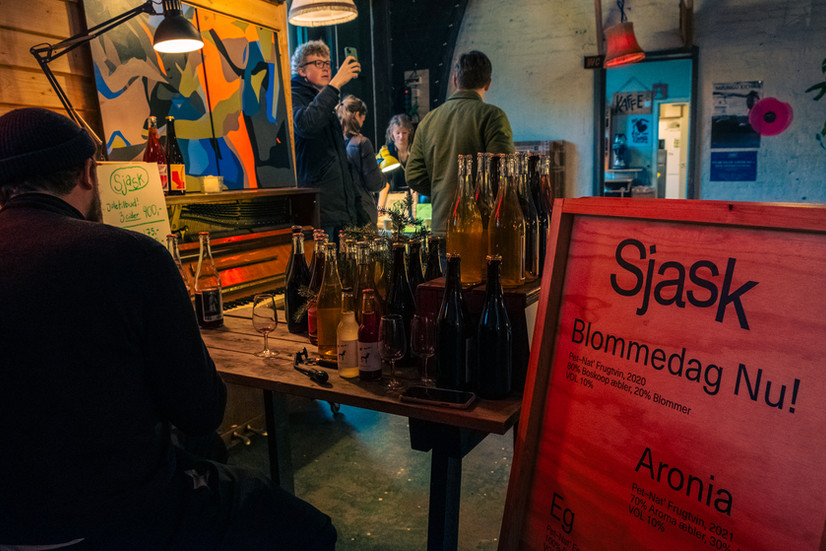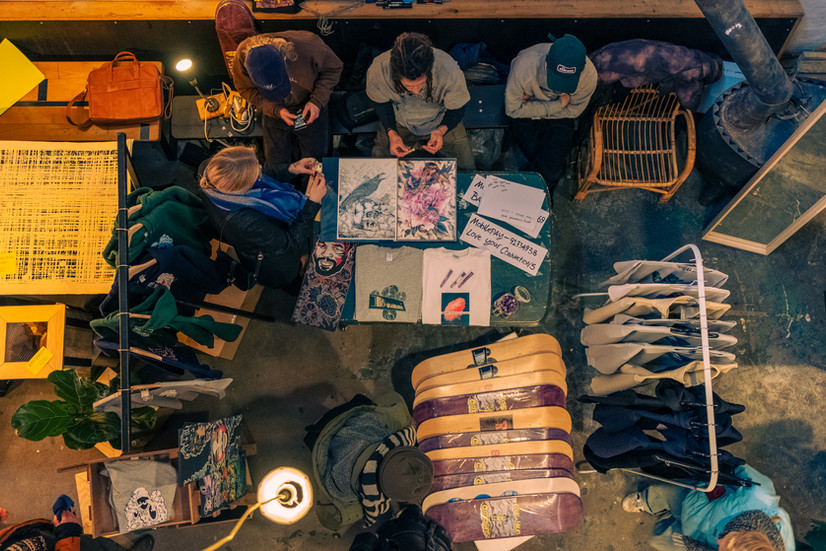- Mikołaj Chomacki
- Apr 1
I snapped some shots at November’s "Game of SKATE" event—a Banzi and L.Y.C. collab. Their comfy clothes (I tested them!) and A-house's transformation into a real skate park blew me away. I visited his studio to learn more about his magic.
About five years passed before Banzi got his first container from Jonas Larsen in early 2016. It was way different back then, Jonas' was out of uni with bunch of his stuff still contained in the unit.
Banzi So out here, it felt crazy, you know, with all this stuff around. /chuckles/ Then I just started. I got those skateboard molds. I made skateboards, handmade. I started in the spring and went through the whole summer.
I didn't have money. I didn't have nothing, you know (...). So, as I just thought about it, I couldn't continue, at that moment, to try to go to school and get a "real job" and stuff like that. So I just started here. (...) and then, I had this one job because of a guy at an event. He was like: "Oh, I saw you printing on skateboards. Can you print shirts and stuff like that?." I can try it. /laughs/ Oh, my gee... 80 shirts. Whoa, eighty shirts for the first job. I'm like, "Okay, I can try it." Then I start printing. After that, I continue to learn, get into clothing..."

Doing mainly skateboards for 3 years commercially, screen printing was always something Banzi enjoyed doing on a side. "Shirts, weren't the main thing like they are now. There's just more money in it, you know?" I ask if there is any story behind L.Y.C. collaboration?
Banzi I just met those guys a few years back /laughs/. They into skateboarding, like me. I like the way they make their events. I like the way they come up; they're not posh. That's why we CHOSE to work together. Both of us are very... light-hearted if you understand me. We don't take things too seriously; we just go with the flow. People who take themselves and other things too serious, they would never /enjoy the ways we do/. That's the thing. You have to play with everything, you have to play with life. (...)
Another thing is - sometimes people come in from outside and ask, "Wow, really you can make all that in such a small place?" and I'm like, "Well, Yeah, duh" /laughs/. I enjoy seeing how many things you can make in a small place. In my opinion, it's much better for me, much better for people, much better for the environment. "Why should I?" Why should I double up space and double up the rent to make the same amount I can do here? (...) Sometimes, I say to people: "Having this job is like having your own room as a child, just as a grown-up." /laughs/ You can do whatever you want in here! You can move your bed if you want to, put your stuff on the floor, and no one will say, "Clean up!" /chuckles/. That's my mentality in life. You have to play, just play, keep playing. If you don't play, you die. I've got two kids, and I don't wanna be a serious-idiot-grownup. I am grown up, I just like to play. That's why I love (X). I love this place. No one says: you're wrong the way you make your house outside, or you're wrong with the way you make your things. People respect each other or accept "Okay, that's the way he is.". Some people prefer more 'professional' in more 'professional buildings' - and I won't say "you're wrong" or anything. Choose whatever you want to choose.
HEJ We appreciate the value of people who choose to come here and build those things together.
Banzi I like it. I haven't been anywhere where it's so free, in a non-free country /laughter/

Part of the text was originally published in "Hej Nabo", an Institut for (X) community zine.



















































































